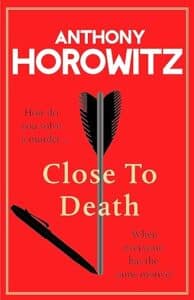
I love Anthony Horowitz. His writing and his mysteries just work for me, and every adult book he writes is a must-read. (I confess, I don’t love his series for kids, Alex Rider.) I adored Magpie Murders, both the book and the miniseries, and I love the Hawthorne and Horowitz books. It’s fun seeing an author write himself into a series as somewhat of a clueless dolt. (When Horowitz asks Hawthorne to tell him the solution to an old murder case, Hawthorne replies, “You never know the solution, mate. That’s what makes your writing so special. You don’t have a clue.” Ha! (p. 65 of the ARC))
This book is pretty different from the previous Hawthorne and Horowitz books. In the previous books, the author has watched Hawthorne solve a mystery and then written a book about it. In this book, he writes about a murder that happened years before. So, unfortunately, the pair don’t spend much time together this time around. Still, I get it – the author needs to keep things fresh for himself and his audience.
I often don’t even try to solve murder mysteries, but Horowitz throws in so many details and so much misdirection and then makes the clues pay off, so I do try to pay attention. (No, I did not figure out what was going on in Close to Death, any more than the fictional Horowitz did.) I also enjoy how English these books are.
“I have never been a huge fan of so-called ‘locked-room’ mysteries,” complains the fictional Horowitz as the real-life Horowitz proceeds to write one. Ha! (p. 184 of the ARC) I had a bit of a hard time with this one in one respect, trying to figure out how he could actually turn this into a published book given what would need to be revealed, but that’s beside the point. I know they aren’t true crime, but clever fiction. And I know these books aren’t done because we still need to find out what happened in Reeth!
I read an advance reader copy of Close to Death from Netgalley. It is scheduled to be released on April 16 and will be available in multiple formats at the Galesburg Public Library. The library owns the whole series in multiple formats. If you want to read the first four books, start with The Word is Murder.


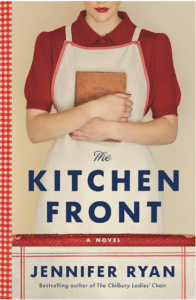 Welcome to Cooking the Books (where we try recipes found in, well, books!) This month, Children’s Assistant & STEM Specialist Ms. Meghan tried out a recipe from one of her recent reads:
Welcome to Cooking the Books (where we try recipes found in, well, books!) This month, Children’s Assistant & STEM Specialist Ms. Meghan tried out a recipe from one of her recent reads: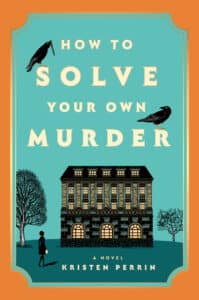 From the publisher: For fans of Knives Out and The Thursday Murder Club, an enormously fun mystery about a woman who spends her entire life trying to prevent her foretold murder only to be proven right sixty years later, when she is found dead in her sprawling country estate…. Now it’s up to her great-niece to catch the killer.
From the publisher: For fans of Knives Out and The Thursday Murder Club, an enormously fun mystery about a woman who spends her entire life trying to prevent her foretold murder only to be proven right sixty years later, when she is found dead in her sprawling country estate…. Now it’s up to her great-niece to catch the killer.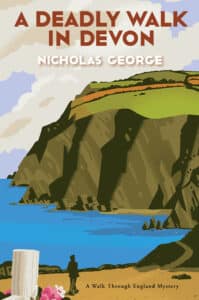 From the publisher: A retired San Diego police detective embarks upon group walking tours in England’s most scenic counties in the first in a charming new mystery series set in the English countryside.
From the publisher: A retired San Diego police detective embarks upon group walking tours in England’s most scenic counties in the first in a charming new mystery series set in the English countryside.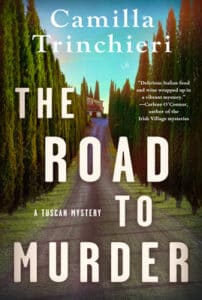 From the publisher: In the latest installment of the acclaimed Tuscan Mystery series, the sole witness at a crime scene speaks only English, and ex-NYPD detective turned amateur chef Nico Doyle is summoned by the local carabinieri to help.
From the publisher: In the latest installment of the acclaimed Tuscan Mystery series, the sole witness at a crime scene speaks only English, and ex-NYPD detective turned amateur chef Nico Doyle is summoned by the local carabinieri to help.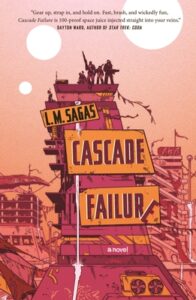 From the publisher: A high-octane, sci-fi adventure featuring a fierce, messy, chaotic space family, vibrant worlds, and an exploration of the many ways to be—and not to be—human.
From the publisher: A high-octane, sci-fi adventure featuring a fierce, messy, chaotic space family, vibrant worlds, and an exploration of the many ways to be—and not to be—human. For many, the start of a new year means making New Year’s resolutions. In 2024, why not resolve to take some steps to develop your career?
For many, the start of a new year means making New Year’s resolutions. In 2024, why not resolve to take some steps to develop your career?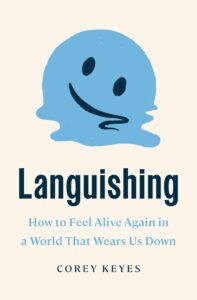 From the publisher: Languishing—the state of mental weariness that erodes our self-esteem, motivation, and sense of meaning—can be easy to brush off as the new normal, especially since indifference is one of its symptoms. Languishing is a must-read for anyone tempted to downplay feelings of demotivation and emptiness as they struggle to haul themselves through the day, and for those eager to build a higher tolerance for adversity and the pressures of modern life.
From the publisher: Languishing—the state of mental weariness that erodes our self-esteem, motivation, and sense of meaning—can be easy to brush off as the new normal, especially since indifference is one of its symptoms. Languishing is a must-read for anyone tempted to downplay feelings of demotivation and emptiness as they struggle to haul themselves through the day, and for those eager to build a higher tolerance for adversity and the pressures of modern life. With it being the end of the year, many people are pressed for time–me included. With activities nearly everyday outside of work, Camilla Saulsbury’s
With it being the end of the year, many people are pressed for time–me included. With activities nearly everyday outside of work, Camilla Saulsbury’s Recipe
Recipe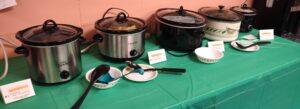 Library staff warmed up their colleagues with crockpot recipes this November at our staff Slow Cooker Showdown. Four indulgent recipes were offered up for tasting and voting by the library staff: Crock pot hot chocolate, Chicken and dumplings, Mexican lime soup with shredded chicken, and Curried butternut squash soup (vegan). It was a close call, but Mexican lime soup, created by children’s librarian LeAnna, won the coveted traveling trophy. It was a SOUP-er good day!
Library staff warmed up their colleagues with crockpot recipes this November at our staff Slow Cooker Showdown. Four indulgent recipes were offered up for tasting and voting by the library staff: Crock pot hot chocolate, Chicken and dumplings, Mexican lime soup with shredded chicken, and Curried butternut squash soup (vegan). It was a close call, but Mexican lime soup, created by children’s librarian LeAnna, won the coveted traveling trophy. It was a SOUP-er good day! INSTRUCTIONS
INSTRUCTIONS